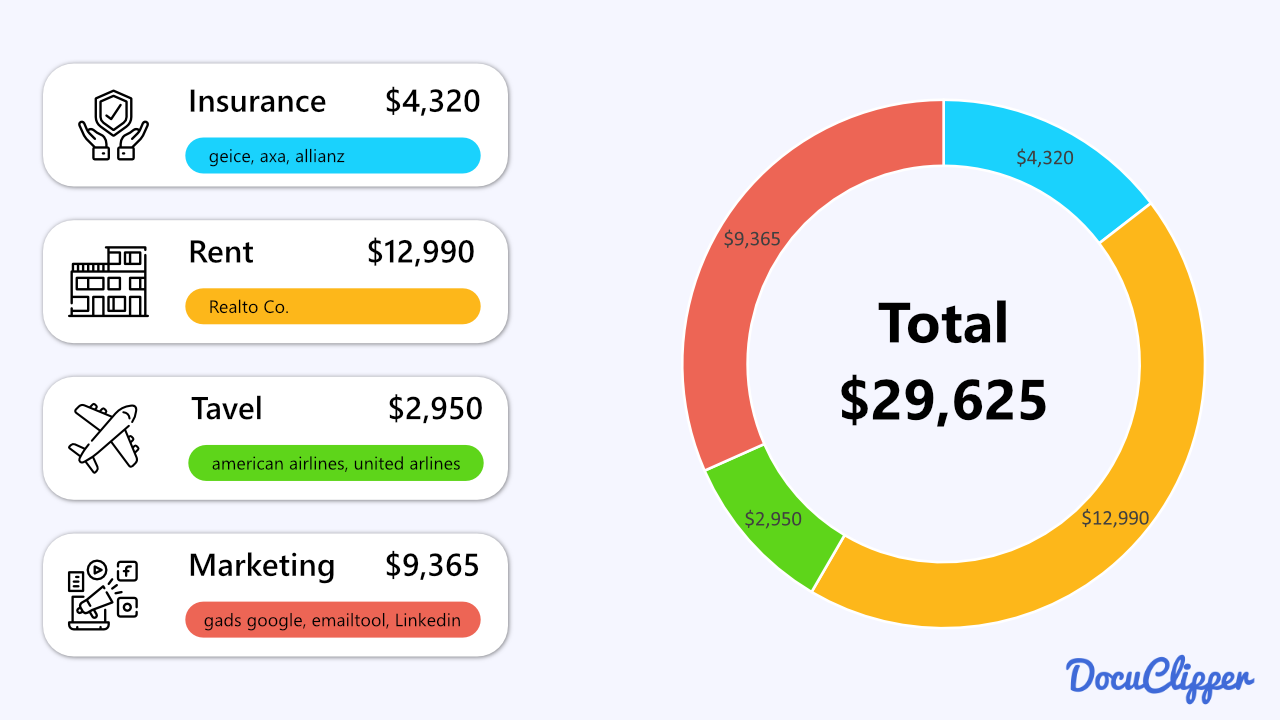Banks and financial institutions seem to speak their own language that many of us cannot understand, filled with abbreviations, acronyms, and jargon that can be confusing to the average customer just like you and me.
When you receive your monthly bank statement, it can look like it’s written in code with all those letters and numbers that don’t seem to make any sense.
In this blog post, we’ll walk you through some of the most common abbreviations and terms found on bank statements and explain what they mean in plain language so you can better understand your finances.
What Are Bank Statement Abbreviations?
Bank statement abbreviations are shortened versions of longer financial or banking terms used to describe various transactions, fees, entries, codes, and more on your account statement.
For example, rather than writing out “Automated Teller Machine” every time you make a cash withdrawal, it will just show as “ATM”. Other common shortened forms include “ACH” for Automated Clearing House, “POS” for Point of Sale, “OD” for Overdraft, and “INT” for Interest.
Financial institutions use these abbreviated letters and acronyms to simplify statements and conserve space instead of spelling everything out in full detail. Some abbreviations have become so common that they are industry-standard terms.
So, in short, bank statement abbreviations allow banks to communicate transactions, balances, fees, etc. in shorthand to save room and provide essential account details at a glance.
But all that shorthand can become alphabet soup for customers trying to interpret their statements!
Why Should You Know Bank Statement Abbreviations?
Knowing common bank statement abbreviations is important for several reasons.
First, it helps you clearly understand all the transactions on your account and do proper bank statement analysis or bank statement audits.
Furthermore, knowledge of common abbreviations and codes makes the task of categorizing bank transactions during bank statement reconciliation much simpler.
When categorizing the different transactions on your statement, acronyms like ATM, POS, ACH, and INT clearly identify cash withdrawals, debit card payments, transfer funds, earned interest, and other common categories without needing to research unclear codes.
When you recognize terms like ATM, ACH, and OD, you can quickly grasp the meaning instead of getting confused by cryptic letters and numbers.
Understanding abbreviations also allows you to spot any unusual or fraudulent activity. If an unfamiliar code appears that you don’t recognize, you can investigate further. This is especially important when doing bank statement processing for business or personal purposes.
Additionally, if you notice frequent OD charges, you can take steps to avoid overdraft fees in the future.

Understanding the terminology on your statement allows for smoother monthly or quarterly bank statement reconciliation — an important process for tracking account activity and catching discrepancies.
Finally, fluency in bank terminology allows you to communicate more effectively when contacting your financial institution with any questions or issues. Rather than struggling to explain a mysterious CHG fee, you can simply reference the ACH charge in question.
In short, familiarity with common statement abbreviations saves time avoids confusion, and enables you to stay well-informed about every debit, credit, and fee affecting your account. So learn your ABCS of bank-speak!
Why Banks Use Abbreviations and Acronyms
Banks, credit unions, and other financial institutions rely heavily on acronyms, abbreviations, and codes rather than writing out full descriptions on account statements.
There are a few key reasons for this common practice:
- Saving Space: By shortening terms like “Automated Clearing House” down to “ACH”, banks can condense more transactions onto a single page. This keeps statements from becoming dozens of pages long. This saves money and the planet.
- Increasing Efficiency: Abbreviations speed up internal bank processes for recording transactions and issuing statements. Workers can enter shorthand codes much faster.
- Meeting Standards: Certain abbreviations have become sector-wide standards, aligning banks with universal financial communication protocols and allowing smoother transfers between institutions.
- Technical Requirements: Strict systemic and compliance rules sometimes dictate that only precise codes, rather than long-form descriptions, may be used to represent specific transaction types.
As customers, dealing with abbreviations rather than full terminology can feel confusing.
But overall, they allow your bank to operate faster and remain in step with industry-wide financial systems – even if they make statements tricky to decipher!
Common Bank Statement Abbreviations, Jargon, and Acronyms
Here we have curated the list of most commonly used bank statement abbreviations, jargon, and acronyms along with what they stand for and their explanation:
| Abbreviation | What it stands for | Explanation |
|---|---|---|
| ABCP | Asset-Backed Commercial Paper | Short-term investment securities backed by collateral |
| ABS | Asset-Backed Securities | Securities backed by financial assets like loans, leases, or receivables |
| AC | Amortised Cos | Method of accounting for financial assets based on amortized cost |
| ACH | Automated Clearing House | Electronic network for financial transactions in the U.S. |
| AFS | Available for Sale | Financial assets designated as available for sale by the holder |
| AIRB | Advanced Internal Ratings Based | An approach used by banks to determine credit risk for regulatory capital |
| ALCo | Asset and Liability Management Committee | Group responsible for coordinating the management of assets and liabilities |
| AMEX | American Express | Financial services corporation specializing in payment card services |
| APR | Annual Percentage Rate | The interest rate for a whole year rather than just a monthly fee/rate |
| ARA | Annual Report and Accounts | Comprehensive report on a company’s activities throughout the preceding year |
| AT1 | Additional Tier 1 | Core capital in a bank’s capital structure |
| ATB | Adjusted Trial Balance | Trial balance after adjustments are made |
| ATM | Automated Teller Machine | A machine that provides banking transactions without a teller |
| ATM RFD | ATM refunds | Refunds processed through an ATM |
| BACS | Bankers’ Automated Clearing Services | System for financial transactions in the UK |
| BBK | Beneficiary Bank | Bank receiving funds in a transaction |
| BBP or BP | Bill Payment | Payment made to settle a bill |
| BGC | Bank Giro Credit | Method of transferring money by instructing a bank to directly transfer funds |
| BIC | Bank Identifier Code | Code that identifies banks internationally |
| BNF | Beneficiary Name Field | Field in a transaction indicating the beneficiary’s name |
| BPOA | Beginning Period of Availability | Identifies the first year of availability under law that the appropriation may incur new obligations |
| BSP | Branch Single Payment | Single payment made through a bank branch |
| CAFE | Central Accounting Front End | System for managing accounting processes centrally |
| CAT | Charges, easy Access, fair Terms | Financial product features ensuring fairness and accessibility |
| CCC | Currency conversion charge | Fee for converting currency in transactions |
| CDL | Career Development Loan | Loan to fund vocational education and training |
| CDM | Cash & Deposit Machine | Machine for depositing cash and checks |
| CFR | Code of Federal Regulations | Codification of the general and permanent rules published in the Federal Register by the departments and agencies of the Federal Government |
| CHAPS or CHP | Clearing House Automated Payment System | Same-day automated payment system for high-value transactions in the UK |
| CHG | Charge | Fee applied to an account for various services |
| CHQ | Cheque | Document that orders a bank to pay a specific amount from a person’s account |
| CIR | Collections Information Repository | Database for managing collection information |
| C‐Key | Classification Key | Key used for classifying transactions |
| CO | CO Certifying Officer | Officer responsible for certifying financial transactions |
| COR | Correction | Adjustments made to correct an error in an account |
| CR | Credit | Entry recording an amount received |
| CRE | Credit payment | Payment made to an account, increasing its balance |
| CSC | Card Security Code | 3-4 digital numbers on the back of the card, also known as CVV |
| CSH | Cash | Physical currency used in transactions |
| CUI | Centralised Unpaid In (Unpaid Cheque) | Central system for managing unpaid checks |
| CWP | Cold Weather Payment | Financial aid is given in extremely cold weather conditions |
| D/D or DDR | Direct Debit | Instruction to a bank to collect varying amounts from an account |
| DAN | Deposit Account Number | Unique number identifying a deposit account |
| DIV | Dividend | Distribution of a portion of a company’s earnings to shareholders |
| DNP | Do Not Pay | Instruction or alert not to process a payment |
| DR | Account Overdrawn or Debit Item / Debit Balance | Indicates an overdrawn account or a debit transaction |
| DUNS | Data Universal Numbering System | System that assigns a unique numeric identifier to a single business entity |
| DWP | Department of Work and Pensions | UK government department responsible for welfare and pension policy |
| ECP | Electronic Check Processing | Process of converting a paper check into an electronic transaction |
| EFT | Electronic Funds Transfer | Transfer of money from one bank account to another electronically |
| EPOA | Ending Period of Availability | Identifies the last year of availability under law that the appropriation may incur new obligations |
| ERTF | Exchange Rate Transaction Fee | Fee associated with converting currency in a transaction |
| ESF | Exchange Stabilization Fund | Fund used to stabilize exchange rates |
| FPI or FP | Faster Payments Inwards | Incoming fast electronic payments in the UK |
| FPO | Faster Payments Outwards | Outgoing fast electronic payments in the UK |
| FRB | Federal Reserve Bank | Central bank of the United States |
| IAT | International ACH Transactions | International automated clearing house transactions |
| IBAN | International Bank Account Number | International standard for identifying bank accounts |
| IBP | Inter-Branch Payment | Payment made between branches of the same bank |
| IDD | International Direct Deposit | Direct deposit service for international payments |
| IMF | International Monetary Fund | International organization working to foster global monetary cooperation |
| IMO | International Money Order | Payment order for a pre-specified amount of money |
| INT | Interest | Payment from a bank or credit union to a depositor of interest on their deposit |
| IPP | Internet Payment Platform | Platform for managing internet-based payments |
| ISA | Individual Savings Account | Tax-free savings account in the UK |
| ITL | International | Transactions or activities involving multiple countries |
| MAIN | Main Account Code | Identifies the type and purpose of the fund |
| MTS | Monthly Treasury Statement | Monthly statement summarizing the financial activities of the federal government |
| NDC | Non Dividend Counterfoil | Document proving ownership of shares without dividends |
| NO WI BON | No Withdrawal Bonus | Reward for not withdrawing funds from an account |
| N-S TRN FEE | Non Sterling Transaction Fee | Charge for transactions in currencies other than Sterling |
| OD | Overdrawn Balance | Balance indicating that an account is overdrawn |
| OD/S | Overdrawn Sub Total | Subtotal amount by which an account is overdrawn |
| OTR | Online Banking Transaction | Transaction conducted through online banking |
| PII | Personally identifiable information | Information that can be used to identify an individual |
| PIR | Payment Information Repository | Database for storing payment information |
| POC | Post Office Counters | Services provided by a post office, including financial transactions |
| POS | Point Of Sale / Debit Card Transaction | Transaction made at a retail location or with a debit card |
| REV | Reversal | Transaction that reverses a previous transaction |
| RTN | Routing Transit Number | Number identifying a financial institution in a transaction |
| S | Sub-Total | Intermediate total of amounts or items |
| S/line | Statement Line | Line item in a bank statement |
| S/O, SO or STO | Standing Order | Instruction to a bank to pay a set amount at regular intervals |
| SAL | Salary | Payment received as wages or salary |
| SAM | Shared Accounting Module | System for managing shared accounting processes |
| SBT | Screen Based Transaction | Transaction conducted through a digital interface |
| SOD | Statement Of Differences | Document detailing discrepancies in accounting records |
| SPR | Standard Payment Request | Request for a standard payment |
| SPS | Secure Payment System | System for secure financial transactions |
| SSN | Social Security Number | Unique number assigned to U.S. citizens for tracking social security |
| Sub | Sub Account Code | Identifies an available receipt or other Treasury ‐ defined subdivision of the account |
| SWIFT | Society for Worldwide Interbank Financial Telecommunication | Network enabling financial institutions worldwide to send and receive information about financial transactions |
| TEL | Telephone Banking | Banking services conducted over the telephone |
| TFR | Transfer | Movement of funds from one account to another |
| TIN | Taxpayer Identification Number | Number used to identify taxpayers in the U.S. |
| TLR | Teller Transaction | Transaction conducted with a bank teller |
| TRACS | Treasury Receivable, Accounting & Collection System | System for managing treasury receivables and collections |
| TRF | Transfer | Movement of funds from one place to another |
| TSU | Telephone Banking | Banking services conducted over the telephone |
| UNP | Unpaid | Transaction or cheque that has not been paid |
| VRATE | Visa Payment Scheme Exchange Rate | The exchange rate used by Visa for international transactions |
| XML | Extensible Markup Language | Markup language for encoding documents in a format that is both human-readable and machine-readable |
Tips for Decoding Your Bank Statement
In this section, we have curated some of the best tips provided by bank customer support teams to better understand your bank statement:
- Carefully Review Transactions: Scrutinize each line item and take notes on unfamiliar codes. Compare to previous statements to identify new codes.
- Highlight Unknown Abbreviations: Mark abbreviations you don’t recognize right away so you can look them up or ask your bank about specific meanings.
- Learn Common Terms: Study guides of common bank statement shorthand like ACH, POS, ATM, OD, INTEREST, etc. Many recur frequently.
- Note Frequency of Fees: If you see repeat fees like overdraft (OD) or maintenance charges, assess ways to reduce these expenses.
- Compare Related Statements: If you have other accounts like credit cards or loans, compare abbreviations across statements to discern meanings.
- Contact Bank with Questions: If an abbreviation remains a mystery even after a thorough review, your banking representative can decode it.
- Use Online Banking Tools: Many bank websites and apps have glossaries explaining various transaction codes that may prove helpful.
Conclusion
While bank statements may seem filled with confusing codes and abbreviations, taking the time to identify common shortened terms can make understanding your finances much easier.
There are many ubiquitous acronyms like ATM, POS, and ACH that simplify frequent bank transactions. Other codes reference types of transfers, interest earned, various fees, or overdraft charges.
Though it may take some initial effort to decipher meanings, gaining fluency in bank terminology will allow you to monitor statement activity. You can catch unauthorized uses, avoid unnecessary fees, and communicate effectively with financial institutions.
So don’t let cryptic abbreviations deter you from mastering your money!



